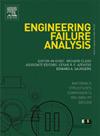地震中钢筋混凝土结构的连根拔起倒塌机制
IF 5.7
2区 工程技术
Q1 ENGINEERING, MECHANICAL
引用次数: 0
摘要
2023年2月6日的kahramanmaraki地震序列,是仪器地震学时代土耳其最致命的地震。这场悲剧的一个重要因素是土耳其的大量建筑,由钢筋混凝土(RC)建筑组成,其中许多建筑由于广泛的破坏而变得脆弱。土耳其钢筋混凝土建筑存量的弱点已得到充分证明,因为它们在过去的地震中一再表现出来。然而,考虑到过去二十年来在地震规范和危险地图方面取得的进展(由于1999年的地震而大大进步),2000年以后建造的建筑物大面积倒塌在很大程度上是出乎意料的。本文的重点是在震后侦察任务中反复观察到的一种特定类型的崩塌机制。这里称为“连根拔起的倒塌”,这种机制不同于更常见的煎饼式倒塌,通常在不合格的土耳其钢筋混凝土建筑中看到。通过对根据土耳其抗震规范设计的钢筋混凝土框架建筑进行参数化分析,利用震区的实际案例研究探讨了连根拔起倒塌背后的可能原因。结果表明,当特定条件一致时,例如高速要求,灵活的承重系统,不适当的构件设计以及高宽比,即使满足施工质量标准和设计规范要求,也可能以连根拔起的方式发生完全倒塌。本文章由计算机程序翻译,如有差异,请以英文原文为准。
Uprooting collapse mechanism of RC structures in earthquakes
The Kahramanmaraş Earthquake Sequence of February 6, 2023, stands as the deadliest earthquake in Turkey during the era of instrumental seismology. A significant factor in this tragedy is the large building stock of Turkey, comprised of reinforced concrete (RC) buildings, many of which are vulnerable attributing to the widespread destruction. The weaknesses in the Turkish RC building stock have been well-documented, as they have repeatedly manifested in past earthquakes. However, given the progress in seismic codes and hazard maps over the past two decades, greatly advanced because of the 1999 earthquake, the widespread collapse of buildings constructed after 2000 was largely unexpected.
This paper focuses on a specific type of collapse mechanism repeatedly observed during post-earthquake reconnaissance missions. Termed here as the “uprooting collapse”, this mechanism differs from the more common pancake-style collapses typically seen in substandard Turkish RC buildings. The possible causes behind the uprooting collapse are explored using an actual case study from the earthquake zone, supported by parametric analyses on RC frame buildings designed in accordance with the Turkish Seismic Code. The results indicate that when specific conditions align, such as high velocity demands, flexible load-bearing systems, improper structural member design, and a high height-to-width ratio, a total collapse in an uprooting fashion becomes possible even if construction quality standards and design code requirements are met.
求助全文
通过发布文献求助,成功后即可免费获取论文全文。
去求助
来源期刊

Engineering Failure Analysis
工程技术-材料科学:表征与测试
CiteScore
7.70
自引率
20.00%
发文量
956
审稿时长
47 days
期刊介绍:
Engineering Failure Analysis publishes research papers describing the analysis of engineering failures and related studies.
Papers relating to the structure, properties and behaviour of engineering materials are encouraged, particularly those which also involve the detailed application of materials parameters to problems in engineering structures, components and design. In addition to the area of materials engineering, the interacting fields of mechanical, manufacturing, aeronautical, civil, chemical, corrosion and design engineering are considered relevant. Activity should be directed at analysing engineering failures and carrying out research to help reduce the incidences of failures and to extend the operating horizons of engineering materials.
Emphasis is placed on the mechanical properties of materials and their behaviour when influenced by structure, process and environment. Metallic, polymeric, ceramic and natural materials are all included and the application of these materials to real engineering situations should be emphasised. The use of a case-study based approach is also encouraged.
Engineering Failure Analysis provides essential reference material and critical feedback into the design process thereby contributing to the prevention of engineering failures in the future. All submissions will be subject to peer review from leading experts in the field.
 求助内容:
求助内容: 应助结果提醒方式:
应助结果提醒方式:


